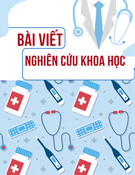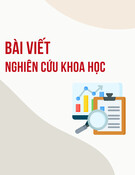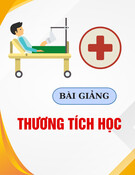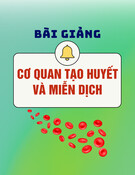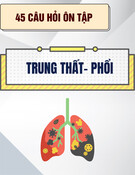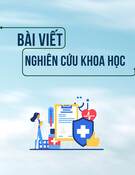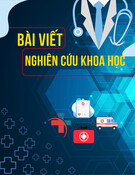
Can Tho Journal of Medicine and Pharmacy 10(7) (2024)
59
human skull sources, with the aim of using it as a bone grafting material. Vietnam Medical
Journal, 483:112-117.
11. Tran Cong Toai, Doan Van Phung (2008). Study on the process of manufacturing allograft bone
using demineralization method. Journal Of University Of Medicine And Pharmacy At Ho Chi
Minh City, 15(2):25-32.
SATISFACTION OF INPATIENTS ABOUT HEALTH EDUCATION AT
CAN THO UNIVERSITY OF MEDICINE AND PHARMACY HOSPITAL
Nguyen Thi Thuy Trang1*, Nguyen Viet Phuong1, Nguyen Tuan Linh1,
Nguyen Thi Bich Giang2, Ho Van Duc2, Quach Tan Dat3, Nguyen Hoang Sinh4
1Can Tho University of Medicine and Pharmacy;
2Can Tho University of Medicine and Pharmacy Hospital;
3Hoan My Cuu Long Hospital;4Nam Can Tho University
*Corresponding author: ntttrang@ctump.edu.vn
Received: 15/09/2023
Reviewed: 16/11/2023
Accepted: 27/02/2024
ABSTRACT
Background: Health education for patients is one of the essential tasks of physicians in
patient care and treatment. To improve the effectiveness of health care and treatment, physicians
must spend more time with patients. The interaction of physicians in performing health education
for patients must be really enthusiastic, dynamic and responsive to the needs of each patient.
Objectives: This study aims to describe the satisfaction of inpatients about the health education
communication activities of physicians in clinical departments of university hospitals at Can Tho
University of Medicine and Pharmacy Hospital in June and July - 2023. Materials and methods: A
convenience sample of 210 inpatients in 07 clinical departments at the time of discharge from the
hospital was surveyed in this descriptive, cross – sectional study. Prepared questionnaires for face-
to-face interviews with 37 questions (built by referencing documents related to health education
communication for patients, and at the same time proposing some new elements for further study).
Descriptive statistics were used to analyze data. Results: The majority of the patients were female,
accounting for 57.14 %, the average age was 52.01 ± 2.3. Patients had a positive attitude toward
thehealth educati on communication methods of physicians, with a score of 69.59 ± 15.73. Most
patients received health education in the form of individual consultations, accounting for 95.71 %.
The percentage of doctors providing health education consultation to patients was 59.62 %. Patients
had a positive attitude toward the health education communication methods of physicians (69.59 ±
15.73), the mean score of patients' evaluation of health education communication activities was
28.89 ± 4.66 and the content of medical education communication was 32.17 ± 10.18. Conclusion:
This study shows that patients have positive attitudes toward health education at clinical
departments, but patients mainly expect doctors to be the ones to provide information and conduct
health education for them. Therefore, it is necessary to develop a health education program for
patients that pays attention to the central role of doctors.
Keywords: health education, satisfaction, inpatients.






